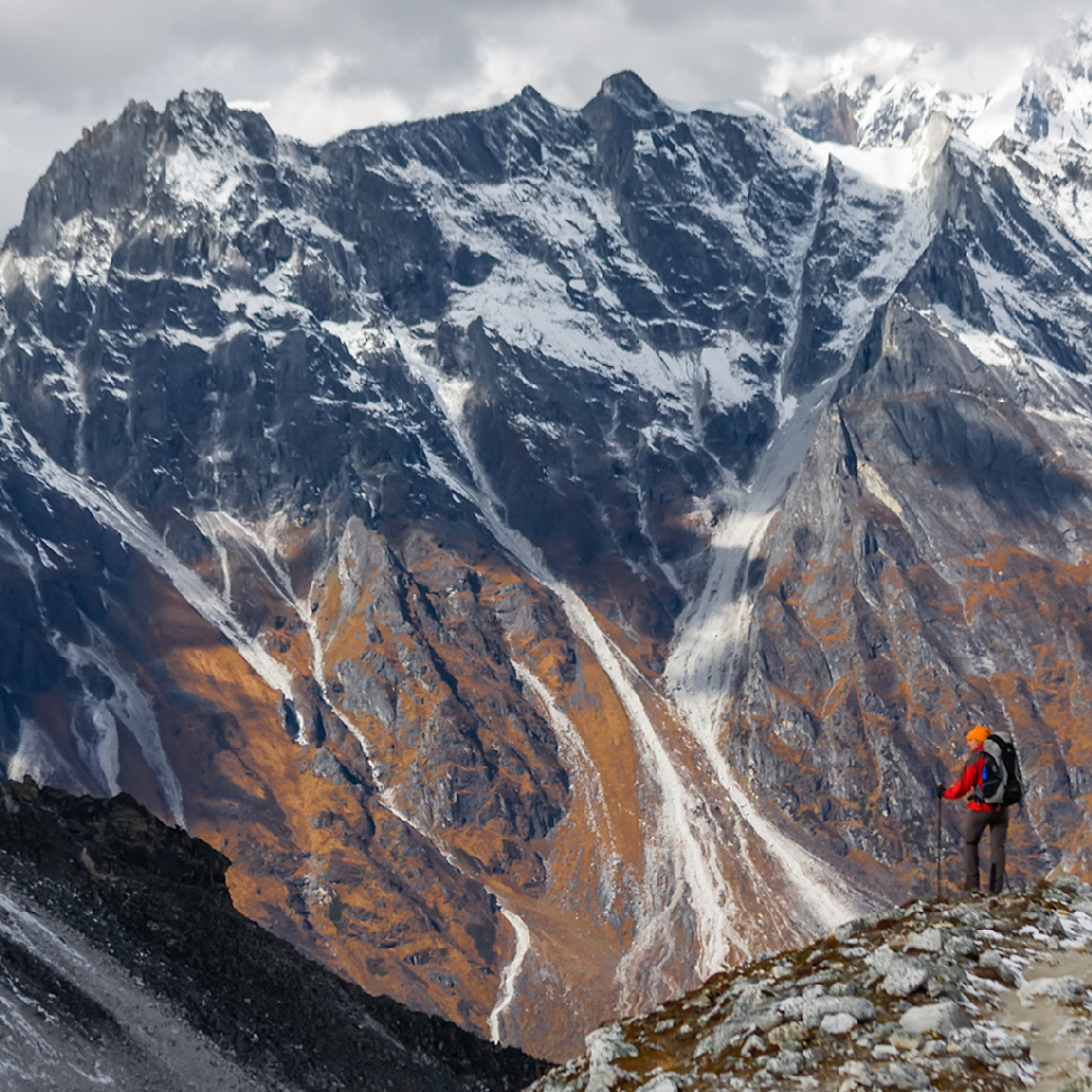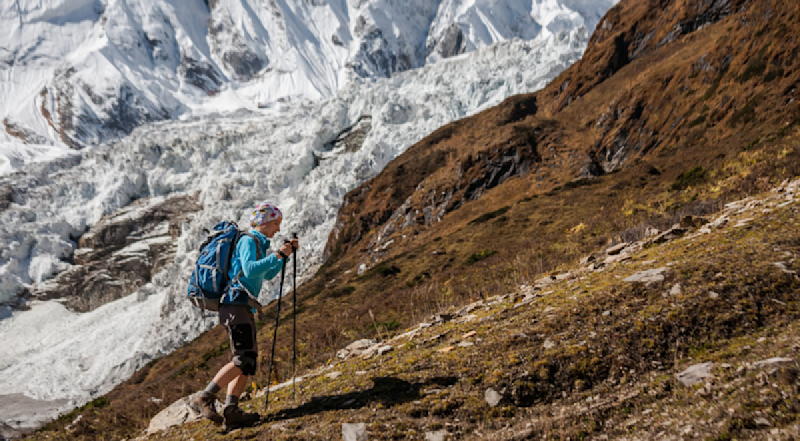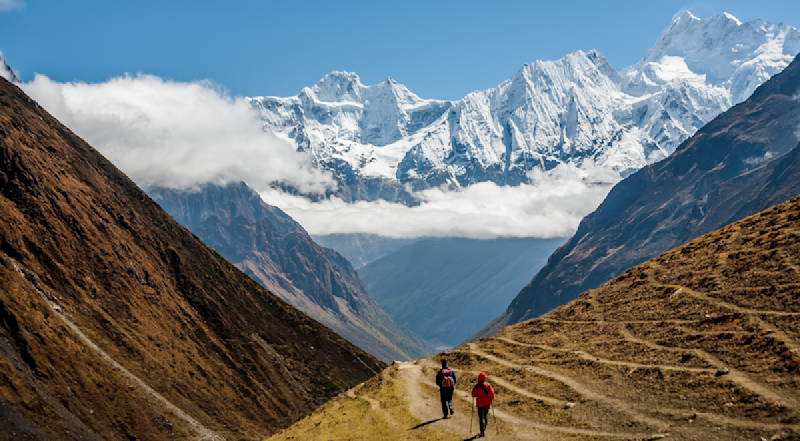
Best Time of Year to Trek the Manaslu Circuit: Seasons & What to Expect
Discover the best time to trek the Manaslu Circuit with our season-by-season guide. Compare seasons to understand Manaslu Circuit trek weather, scenery, and conditions, and choose the Manaslu trekking season that matches your adventure style.

by Emma Marais
7 min read
Overview:
- Manaslu trek in autumn: the best season for clear skies and stable weather
- Manaslu trek in spring: rhododendrons, wildlife, and longer days
- Manaslu Circuit trek in winter: extreme cold and quiet trails
- Monsoon Manaslu trek: lush landscapes but high risks
- Which season is best to trek the Manaslu Circuit?
- Planning for your Manaslu trek
- Choosing the best season for your Manaslu adventure
Manaslu trek in autumn: the best season for clear skies and stable weather
Weather and visibility: Crisp air, dry days, and consistently clear skies make the mountains look razor sharp. Nights at higher camps can drop well below freezing, but the morning sun usually brings back the warmth and the views. Trail conditions: This is prime time for crossing Larkya La. Trails are firm, rivers are lower, and sudden storms are less common. Atmosphere: Teahouses buzz with travellers from all over. Autumn overlaps with Nepal’s major festivals, Dashain and Tihar , so villages come alive with music, prayer flags, and vibrant colours. Scenery: Golden fields at lower elevations and snow-tipped ridges glowing pink at sunrise.
Manaslu trek in spring: rhododendrons, wildlife, and longer days
Weather and visibility: Mornings are usually bright and clear, which is perfect for mountain photos. Light haze can drift in by afternoon, but evenings often deliver gentle, pastel sunsets. Trail conditions: A little snow can linger in March near the pass. By April and May, trails are mostly clear, and Larkya La is normally open. Atmosphere: Fewer people than in autumn. Teahouses are social without being crowded, so it’s easier to find a quiet seat by the fire. Scenery: Hillsides bloom with rhododendrons in red and pink, forests feel alive, and you’re more likely to spot wildlife.

Manaslu Circuit trek in winter: extreme cold and quiet trails
Weather and visibility: Skies are often clear, but with harsher winds and sudden storms at altitude. Temperatures plunge above 3,500 metres. At Dharamsala, the last stop before Larkya La, nights can feel bone-deep cold, dropping below –15 °C (5 °F). Trail conditions. Snow and ice build quickly, and the pass is often closed. Lower sections are walkable but slow and slippery. Atmosphere: The crowds vanish. Some days, you might walk for hours without seeing another trekker. A few teahouses stay open, but the mood is calm rather than lively. Scenery: Fresh snow on rooftops and ridgelines, frozen river edges, and a hush that carries for kilometers.
Monsoon Manaslu trek: lush landscapes but high risks
Weather and visibility: Rain dominates. Peaks hide behind clouds, and the valleys turn warm and humid. Trail conditions: Expect mud, swollen rivers, and a higher risk of landslides. Leeches are part of the deal, too. They’re not dangerous, just annoying. Atmosphere: With many teahouses closed and few people on the trail, villages can feel very quiet. Scenery: The upside is vivid green rice fields, powerful waterfalls, and forests that look freshly washed.
Which season is best to trek the Manaslu Circuit?
Autumn (Sept to Nov). Clear skies, steady trails, lively teahouses, and festival energy. Spring (Mar to May). Rhododendrons in bloom, active wildlife, long daylight hours, and fewer crowds. Winter (Dec to Feb). Crisp views and solitude, but extreme cold and a pass that’s often closed. Monsoon (Jun to Aug). Green valleys and dramatic waterfalls, but heavy rain, mud, and a higher risk.

Planning for your Manaslu trek
Permits: You’ll need three: the Restricted Area Permit (RAP), the Manaslu Conservation Area Permit (MCAP), and the Annapurna Conservation Area Permit (ACAP). We’ll help you sort these, but you can read the basics in our permits guide . Guides: Since 2023, trekking the circuit requires a licensed guide. It’s a rule, and it’s also reassurance. Local leaders bring safety, route sense, and cultural insight. Packing. The Manaslu Circuit trek weather can change fast. Layers are key, from thermals to waterproofs. Itinerary. Acclimatisation is everything. Don’t rush the climb.

